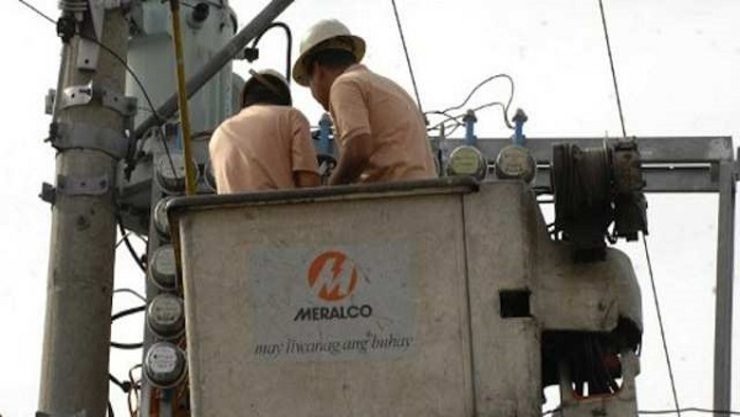SUMMARY
This is AI generated summarization, which may have errors. For context, always refer to the full article.

MANILA, Philippines – The experience of his home province Cebu after typhoon Yolanda (Haiyan) made Senator Sergio Osmeña III confident in his conclusion that Congress does not need to grant President Benigno Aquino III additional powers to address the projected power shortfall in the summer of 2015.
So confident is the chairman of the Senate committee on energy that he’s putting his name on the line. “We have enough. You can blame me if we have a brownout,” he said.
Osmeña said the Department of Energy (DOE) is “playing it safe” in asking for emergency powers. But playing it too safe, the senator said, means unnecessary costs to the government. Energy Secretary Jericho Petilla is looking at spending P6 billion of Malampaya funds to purchase or lease 300 megawatt capacity.
Cebu, the economic hub of central Philippines, did not ask for extra powers when it suffered a massive shortfall after typhoon Yolanda halted operations of geothermal plants in Leyte province, which was the worst hit. Cebu gets a bulk of its power from these plants.
The Visayan Electric Company (Veco), Cebu province’s biggest power distributor, offers an “impressive” model for Luzon, said Osmeña during the Senate committee on energy hearing on Thursday, October 9. The senator opposes state intervention in the power sector. (READ: Osmeña computation shows no need for emergency powers)
ILP softened blow
Veco implemented the Interruptible Load Program (ILP), a scheme approved by the Energy Regulatory Commission (ERC) where energy users with large loads – such as business establishments and factories – will be required to run their standby generator sets to ease the demand for power from the grid during peak hours. It’s the same solution that is being pushed by several lawmakers including Osmeña to address the projected 900 MW shortfall in the summer of 2015.

So massive was the shortfall in Cebu that ILP only covered 42% of the manual load dropping. It did not eliminate brownouts but it softened the blow for customers. Osmeña noted that the post-Yolanda situation was “extraordinary” and is not comparable to the projected shortage in Luzon.
“We (Cebuanos) solved our problems by ourselves, among ourselves. Dito konti lang ang kulang, sa Cebu talagang ang laki ng nawala doon,” said Osmeña.
Veco chief operating officer Sebastian Lacson told the Senate committee said they were able to draw up to 4 million kilowatt hours from ILP in the two months after Yolanda hit. Veco registered a high of 45 megawatts capacity from ILP or 11% of that time’s total demand of 414 megawatts.
This was when Osmeña challenged Meralco during the committee hearing. “Mr Secretary, Meralco can do no less di ba?,” said Osmeña.
Meralco should do better
Based on discussions during the hearing, the current ILP commitments have reached up to 435 megawatts. This can account for only 7% of Meralco’s peak demand of 5,500 megawatts. Osmeña challenged Meralco to get at least 10% or 550 megawatts of capacity.
“You have to do better than Veco,” Osmeña said.
“Naka-11% kami sa Cebu. Don’t tell me Manila can’t do better than that. But 10% is already 500MW in the Meralco franchise areas. Eh, Meralco lang iyan. Meralco only has 70% of Luzon. I am not even talking about Bicol, companies outside Meralco,” said Osmeña.
Osmeña noted that ERC records show there are 3,169 megawatts for Luzon for generating units from 1 megawatt and above. This is more than half of the peak demand of Meralco. (One megawatt can power one building, based on estimates.)
Osmeña is confident that if ILP is explained better, more private companies and individuals will sign up.
Compensation
ILP doesn’t require emergency powers. What it requires is commitment from “kind souls,” as Osmeña put it, to commit to help the government. Their generator sets will suffer wear and tear but Osmeña said businessmen should see it as their contribution to the country.
But they will be compensated and the distribution companies will be able to recover the cost through generation charge.
Veco, for example, paid P10.8 million to compensate the private companies who deloaded 1.7 million kilowatt hours in November 2013. It meant an additional of about 4 centavos per kilowatt hour for all customers for the one-month billing period.

Meralco has projected the ILP will result in an additional 7.5 centavos per kilowatt hour – about double of Veco’s – that may reflect in monthly generation charge. (READ: Meralco customers to pay for ILP?)
For generator sets outside the Meralco franchise, the energy department will compensate them by reimbursing their fuel expenses and extending reasonable recovery.
‘Losing a bit for the sake of everyone’
The DOE projected a shortfall of up to 900 megawatts. The department submitted on Thursday a draft resolution to Congress defining limited powers for President Aquino to, among others, buy or lease diesel diesel generating sets from abroad that will be delivered and installed in the country in order to increase reserves.
Some lawmakers, including Osmeña, have earlier expressed willingness to support limited powers for Aquino. But based on Osmeña’s latest computation, ILP should be enough to address the temporary shortfall.
Osmeña computed at least 815 megawatts available capacity to add the new plants that will go onstream before the summer of 2015. He’s looking at additional 300-400 megawatts if the ILP is explained better to the private companies and individuals. DOE committed to do this. (READ: Osmeña computation shows no need for emergency powers)
For Veco, ILP is a scheme it regularly implements whenever there is a shortfall. The distributor has secured since 2008 the committment of up to 64.7 megawatts from its customers although some of them are unable to deliver when needed.
“When we need the commitments once again – with the help of local government, the chamber, and the participants – we just call on them. They are happy with the compensation that the ERC granted via 2 different resolutions,” said Veco’s Lacson.
“They’re not happy in the sense that they’re making money. I think this is a kind of solution where everyone loses a little bit. They’re happy losing a little bit for the sake of everyone,” Lacson added. – Rappler.com
Add a comment
How does this make you feel?





There are no comments yet. Add your comment to start the conversation.